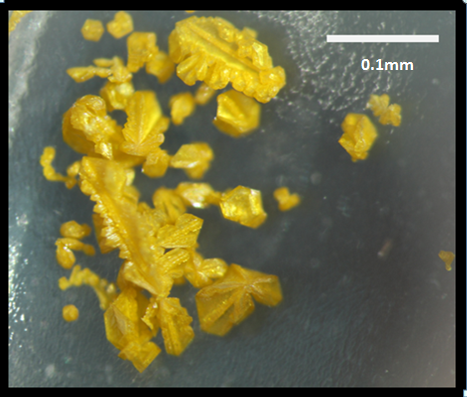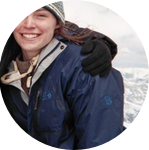About This Project
Fossils in the Great Basin of Nevada hold a great secret: how did animal life evolve and diversify in the Cambrian when some geochemical measurements suggest that oceans were a suffocating 40°C warmer than today? I propose to investigate this mystery surrounding the “Cambrian Explosion” by measuring ancient temperatures with new geochemical techniques and oxygen isotope thermometers in fossilized shells I’ll collect from the Great Basin.Ask the Scientists
Join The DiscussionWhat is the context of this research?
Fossils from the Cambrian, 541 - 485 million years ago, record the early evolution and radiation of all major animal phyla. Climate reconstructions of this deep geologic time are controversial, suggesting that the Cambrian ocean could have been almost 40°C warmer than today: too hot to support modern animal life. These estimates rely mainly on stable (non-radioactive) oxygen isotopes from fossil calcium carbonate shells that are susceptible to alteration after burial. A better recorder of marine climates at this time may be phosphate from “small shelly fossils” (SSF): assemblages of fossilized marine organisms whose minerals resist isotopic alteration through time. My initial measurements show that SSFs have great potential as a tool for accurately reconstructing Cambrian climate.
What is the significance of this project?
Current isotopic estimates of Cambrian ocean temperatures reach as high as 70°C (158°F), which are unlikely given the types of animals that we observe in the fossil record. Did animals actually thrive in a hot-tub-like environment or is there another explanation for the measured isotopic signal? The estimates that we have rely on the oxygen isotope compositions in calcium carbonate shells, which are susceptible to alteration. Our new methods rely on the oxygen isotope composition of phosphate, which is much more stable over time. We will analyze phosphate-containing small shelly fossils from the Pioche Formation in Nevada and more accurately infer the past ocean temperatures. This research will enrich our understanding of Cambrian climate and the geologic controls on seawater composition.
What are the goals of the project?
1. Conduct a short field season to collect rock samples containing small shelly fossils from the Pioche Formation in Nevada.
2. I’ll process the rocks in Prof. Albert Colman’s lab at the University of Chicago to isolate SSF from the limestone matrix. Then I’ll use an optical microscope and scanning electron microscopy to characterize and sort SSF based on morphological features.
3. I will dissolve and process the SSF samples to purify their phosphate as silver phosphate. I’ll analyze the phosphate oxygen isotope composition using a thermochemolysis reactor coupled to a magnetic sector, isotope ratio-monitoring mass spectrometer.
4. I will interpret the results with a focus on understanding temperatures in the near surface Cambrian oceans. This will be my first scientific publication.
Budget
I am proposing to mount a field expedition to collect new samples from the Great Basin strata of the Pioche Formation in Nevada. I would be guided in the field by Prof. Mark Webster (University of Chicago.) He is both a paleontologist and expert on Cambrian biostratigraphy. We would be accompanied by Prof. Albert Colman (also U. Chicago), the stable isotope biogeochemist in whose lab I work.
The budget would fund the field work and shipment of samples back to the lab in Chicago. It would also support the chemical processing of samples to purify phosphate from small shelly fauna and cover oxygen isotope analytical costs. Finally, it would provide a small stipend to me to cover living expenses while conducting this research over the coming months.
Meet the Team
Team Bio
At age three I started a rock collection. It grew rapidly as I would return home from playgrounds, walks, and even vacation trips with pockets weighed down by new stones to inspect and admire. I wondered about the unique histories of each of my rocks – what were they made of, how old were they, what environments they came from. As a college student at the University of Chicago I found that I could study the stories preserved by the chemistry of rocks with a double major in Geophysical Sciences and Chemistry. I’ve been pursuing this interest over the past year by testing how to purify phosphate from small shelly fauna and investigating the utility of this approach for deducing past ocean temperatures. Now that the techniques are working well, I am eager to collect and analyze a full set of samples. I graduated in June and look forward to entering a geochemistry graduate program next fall. In my time away from research, I enjoy hiking, biking, and swimming in the great outdoors.Lab Notes
Nothing posted yet.
Additional Information
Steps involved in making oxygen isotope measurements on phosphatic small shelly fauna:
Figure 1. Cambrian small shelly fauna lived at or near the sea floor and exhibited diverse shapes that correlate with original mineralogy and ecology. These example fossils have been liberated from their limestone matrix through a gentle acid bath treatment. We then sort the fossils based on shape (i.e., “morphotype”). Because of their small size, roughly 100 fossils per morphotype are required for a single isotopic analysis.

Figure 2. Characterization of samples begins with sorting of morphotypes under an optical microscope. The top two panels show spicule (left) and mollusc (right) morphologies. The fossil microstructure and composition is checked on a subset of samples using a scanning electron microscope (SEM). The middle two panels show SEM images for representative spicules (left) and mollusc (right). The interplay of the SEM’s electron beam with a fossil sample generates x-rays whose energies relate to the fossil’s chemical composition. We use the resultant x-ray spectra (bottom two panels) to confirm that the SSF are dominantly composed of a calcium phosphate mineral (apatite).

Figure 3. Sample processing requires long hours of sorting SSF morphotypes at the optical microscope.

Figure 4. The SSF require careful processing to purify shell phosphate as silver phosphate, which can then be analyzed for oxygen isotope composition. Over the past year, I have optimized a technique for handling the complex chemical separations required to make pure silver phosphate from the shell fossils. This image shows the resultant pure crystals from an SSF sample.

Figure 5. Silver phosphate samples are packaged and loaded into an autosampler connected to a reactor furnace. The samples thermally decompose in the furnace and convert to gases that are carried in helium to a gas source, isotope ratio mass spectrometer for oxygen isotope analysis.
Project Backers
- 17Backers
- 104%Funded
- $6,251Total Donations
- $367.71Average Donation
